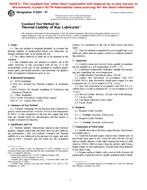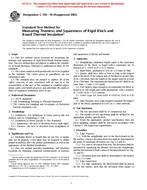1.1 This test method covers a procedure for comparing two products using a two-alternative forced-choice task.
1.2 This method is sometimes referred to as a paired comparison test or as a 2-AFC (alternative forced choice) test.
1.3 A directional difference test determines whether a difference exists in the perceived intensity of a specified sensory attribute between two samples.
1.4 Directional difference testing is limited in its application to a specified sensory attribute and does not directly determine the magnitude of the difference for that specific attribute. Assessors must be able to recognize and understand the specified attribute. A lack of difference in the specified attribute does not imply that no overall difference exists.
1.5 This test method does not address preference.
1.6 A directional difference test is a simple task for assessors, and is used when sensory fatigue or carryover is a concern. The directional difference test does not exhibit the same level of fatigue, carryover, or adaptation as multiple sample tests such as triangle or duo-trio tests. For detail on comparisons among the various difference tests, see referencess. (1), (2), and (3).
1.7 The procedure of the test described in this document consists of presenting a single pair of samples to the assessors.
1.8 This standard does not purport to address all of the safety concerns, if any, associated with its use. It is the responsibility of the user of this standard to establish appropriate safety and health practices and determine the applicability of regulatory limitations prior to use.
Product Details
- Published:
- 09/01/2007
- Number of Pages:
- 11
- File Size:
- 1 file , 140 KB


